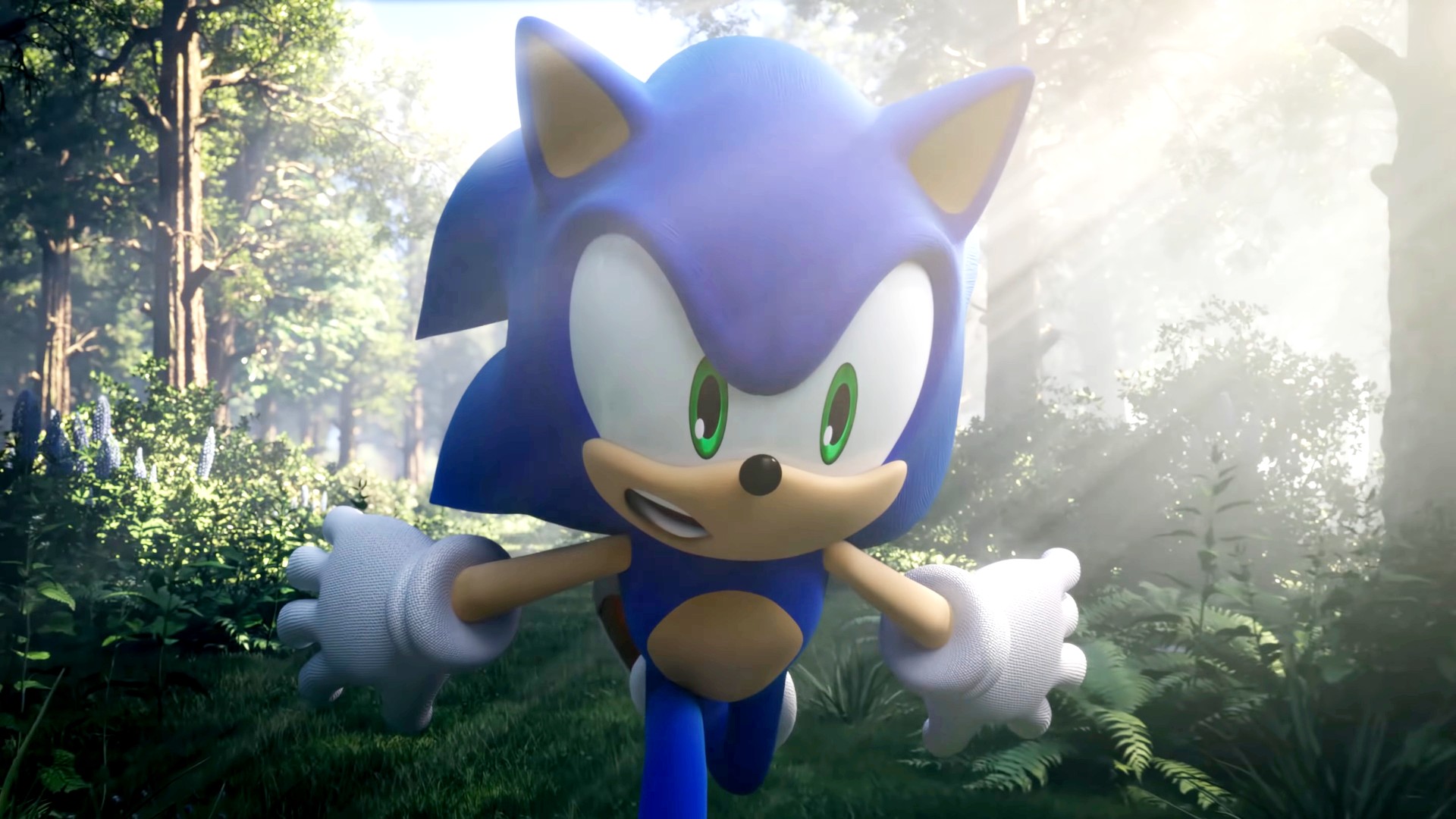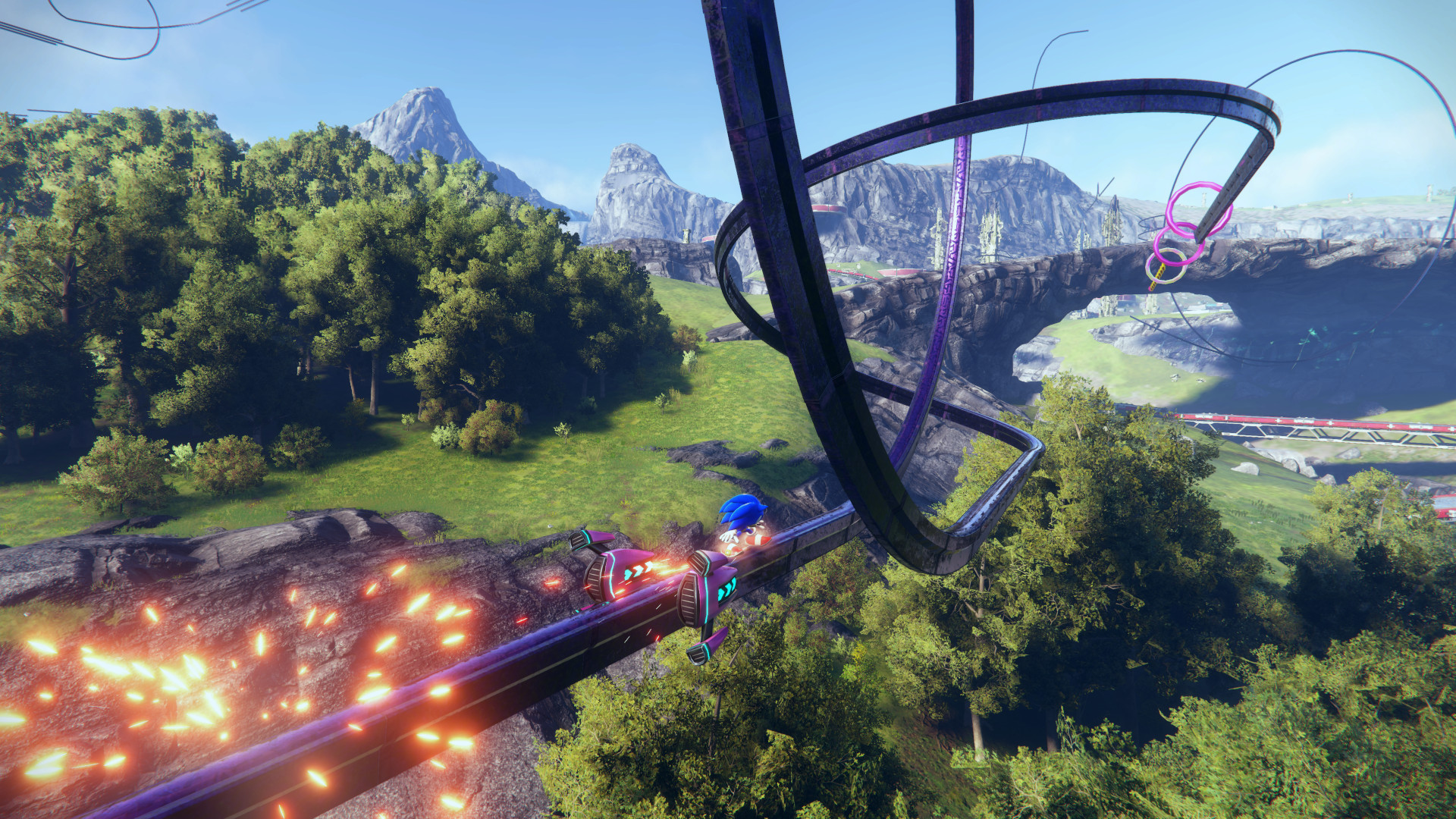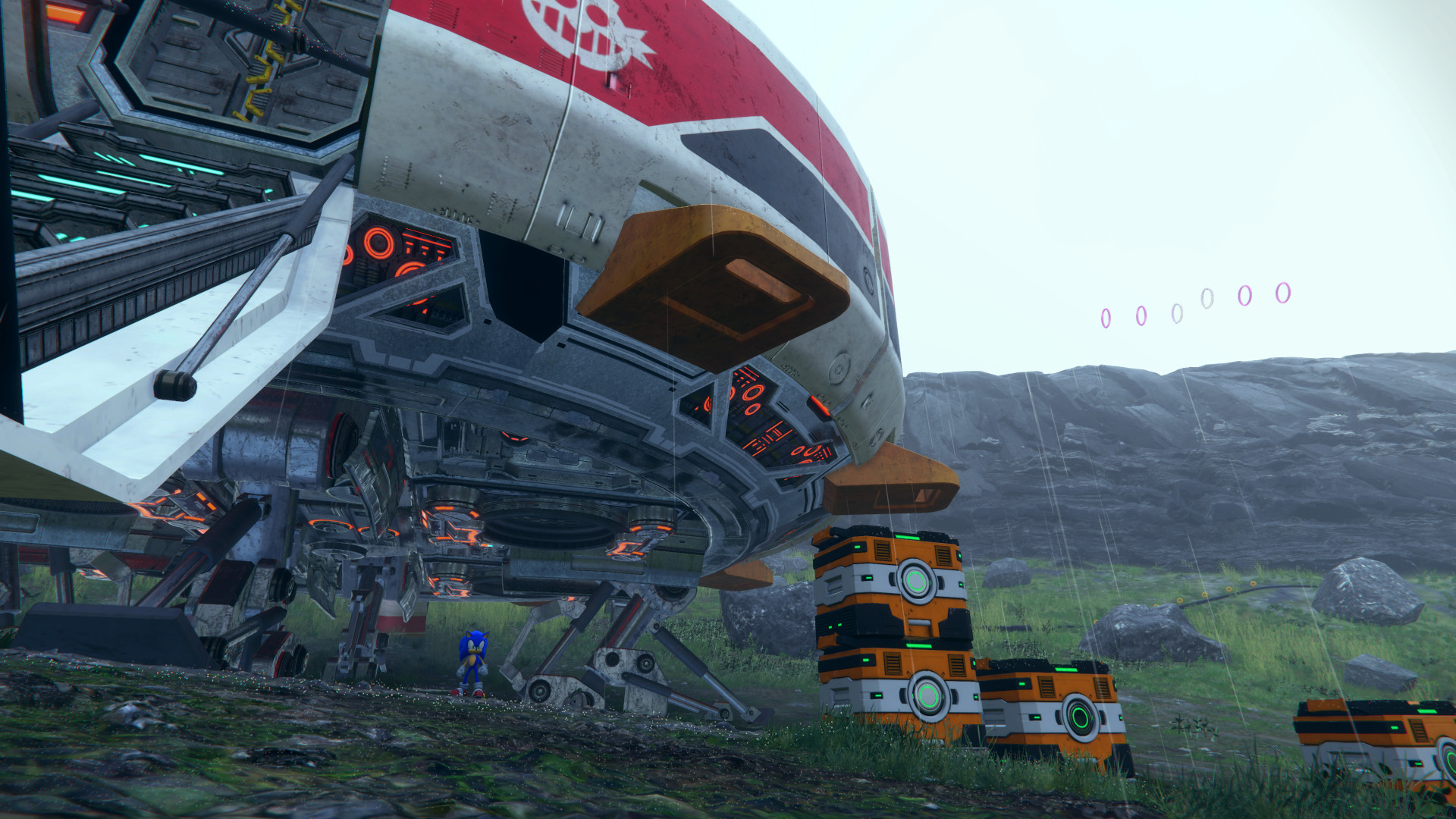Yes, Sonic Frontiers is as bad as it looks, but I want more
Believe the un-hype.

This weekend at the Summer Game Fest Play Days event, the closest thing to an E3 convention that happened this year, there was one game that came up in conversation more than anything else at the show: Sonic Frontiers, Sega's answer to the question "what the heck do we do with Sonic now?"
After walking away from the 30-minute Sonic demo playable at Play Days, most people I chatted with were in agreement with the internet's strongly negative reaction to the recent gameplay reveal video. "Sonic looks rough" is a sentence I heard a lot over the two days. Only one person I talked to had a legitimately good time with it, and even that came with heavy caveats. So by the time it was my turn to take a spin with the blue blur, I reckoned it was either going to be the worst Sonic I've ever played, or a misunderstood masterpiece.
Sonic Frontiers is neither of those things. It does appear to be, once again, a bad 3D Sonic game, but it's the most fascinating kind of bad Sonic has ever been.
The demo kicks off the only way that a Sonic game probably shouldn't: slowly. Frontiers wastes no time mimicking Zelda: Breath of the Wild's structure, starting with a tutorial island that walks through the basics of puzzles, platforming, and punching. But where Zelda immediately sets Link loose in an open world, Frontiers confines Sonic to small arenas with nowhere to go but forward for a while.
Open range
After about 15 minutes of that, Sonic Frontiers pans out and shows off the big world I'm now allowed to explore. Finally I could do the one thing I'd been clamoring for since I picked up the controller: cut loose and run like the gosh-dang wind.
Running is the one part of Frontiers that is an unqualified blast. Sonic's default run speed is more like a puny jog that's only good for combat and puzzles, but slam down the right trigger and he instantly starts burning rubber. Sega gets to have some fun with speed here in a way that'd just feel ridiculous in a Zeld game. Sonic runs straight up most rock faces (sick), can wallrun across gaps, and bounds effortlessly over rolling hills like an electric current following a wire. For a few blissful minutes, I felt like the fastest thing alive.
If that were all Sonic Frontiers is—a playground to explore and exploit the supernatural physics of being Sonic the Hedgehog—I'd be on-board in an instant. Just imagining a Sonic game inspired by the fun of building momentum and sliding down hills in Tribes: Ascend puts a smile on my face. But the chunk of Frontier's overworld I explored is polluted with distractions designed to kill momentum. Even with the newfound power to run in any direction, Sonic's still full of linear "obstacles" that essentially play themselves.
The biggest gaming news, reviews and hardware deals
Keep up to date with the most important stories and the best deals, as picked by the PC Gamer team.

Bump into a springboard and I'm on a one-way trip to another spring, which leads to two more that eventually land on a grind rail that ends at some golden rings or an upgrade material I earned by doing just shy of nothing.
The chunk of Frontier's overworld I explored is polluted with distractions designed to kill momentum.
A bit of nothing can be cool in moderation. It's nice to take a breather and watch Sonic grind through a twirly loop for a few seconds, but that describes just about every platforming challenge I came across in my half hour of Frontiers. Tossing Sonic around on tracks like a living pinball felt kinda cool in 2D, but I never jived with their translation to three dimensions.
It doesn't help that the countless rails, jumpads, and speed ramps are placed haphazardly and visually clash with the rest of the world. It'd be one thing if the overworld was styled like a modern take on Green Hill Zone, but it's decidedly realistic. It's really weird to gaze at the earth-like mountains and meadows of Frontiers and notice the same old cartoony junk that Sonic's been platforming on for 30 years magically floating in mid-air, belting out the same old goofy sound effects against a lowkey piano track. Even worse is how often these garish objects would suddenly pop into existence as I ran by them.
Rough stuff
Frontiers also takes cues from Zelda's environmental puzzles. I solved three or four puzzles in the roughly 15 minutes I had in the main overworld, so they definitely weren't brain-twisters. The earliest was as simple as turning a statue that was facing the wrong way. A later puzzle asked me to follow a trail of squares on an LED grid (which I failed once because Sonic's movement is a little squirrely in small spaces).
I also fought a few bosses that sort of reminded me of the ancient guardian things from Zelda, except the second one was gigantic and seemingly manufactured to be specifically defeated by Sonic the Hedgehog. Not only does it slam down ramp-shaped arms perfect for reaching its top weak spot—it even shoots blue rings at Sonic that do nothing but give him a speed boost. Pretty sinister stuff! The scale of the eight-story boss fight was neat at first, but that faded the third time I was inexplicably knocked off course while running up an arm and had to do it all over again.
I did not have a good 30 minutes with Sonic Frontiers, but some of that can be chalked up to the demo itself being a poor, often bewildering demonstration of the game. Frontiers started off on a bad foot by showing Xbox button prompts that didn't match the PlayStation controller I was using. That added a bit of confusion to early combat and movement tutorials, but no biggie.

Then I noticed the extreme, almost dizzying motion blur that could not be ignored every time I moved the camera. The blur was so noticeable that I imagine the slider that controls motion blur was overclocked past its maximum, but I can't know because it wasn't adjustable in the demo (it's also not as noticeable in the clips provided by Sega that appear in this article). Senior editor Wes Fenlon theorized overtuned motion blur could be an attempt to cover up an inconsistent framerate, but Frontiers ran pretty smoothly to my eye, so the blur either did its job or looked that way for stylistic reasons.
The last bug I encountered turned out to be a false alarm—in the middle of a dialogue between Sonic and Amy, the game suddenly faded to black, revealing moments later that an invisible timer had expired and my time with Sonic Frontiers was over. Little did Sega know it had programmed an appropriately abrupt and confusing end to an equally confounding videogame demo.
I thought for sure that trying it would kill my interest in Frontiers, but now I'm actually curious to play more. I want to know if there are any other biomes, perhaps ones with enough open space for a globe-trotting marathon. I want to know if six more months of development will clean up all the weird technical issues before its "holiday 2022" release (at least on the PC version where hardware limitations need not exist), or if Sega will simply let Sonic Frontiers' release slip into 2023.
Hey, this is the most I've thought about Sonic since I owned a Gamecube! So I guess mission accomplished, Sega?

Morgan has been writing for PC Gamer since 2018, first as a freelancer and currently as a staff writer. He has also appeared on Polygon, Kotaku, Fanbyte, and PCGamesN. Before freelancing, he spent most of high school and all of college writing at small gaming sites that didn't pay him. He's very happy to have a real job now. Morgan is a beat writer following the latest and greatest shooters and the communities that play them. He also writes general news, reviews, features, the occasional guide, and bad jokes in Slack. Twist his arm, and he'll even write about a boring strategy game. Please don't, though.

